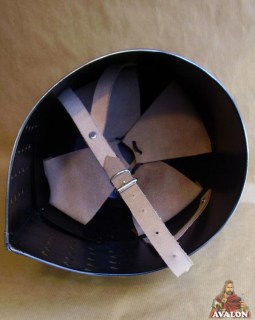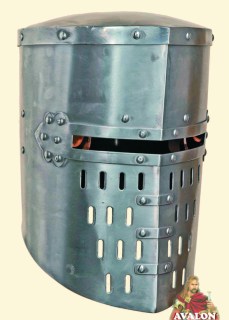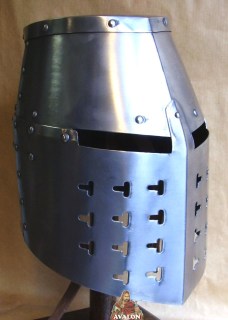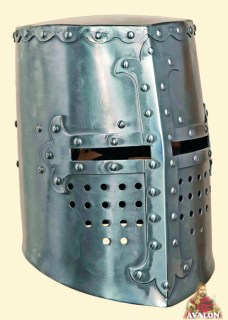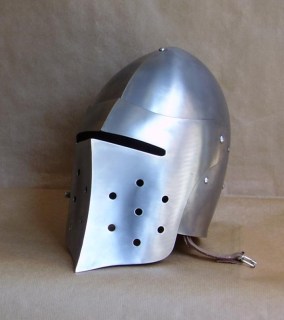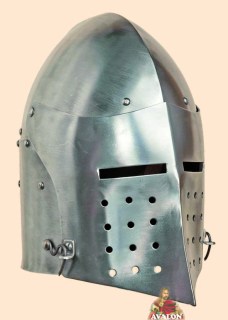
Richard Pembridge helmet
|
Great helm of the XIVth century. The original helmet (which you can admire in the second photo), dating back about to the year 1375, is kept at the Scottish Museum in Edinburgh and it is said it belonged to sir Richard Pembridge. The helm was placed above Sir Richard’s tomb in Hereford Cathedral, as a symbol of his authority and a reminder of his military distinction. Constructed from three plates of steel riveted together, the helm was designed to deflect attack. The helm has traces of a leather lining to which a padded fabric lining would have been stitched. It may have been borne directly on the head, worn over a cloth arming cap or over a mail hood or coif. A comfortable, adjustable, and padded liner is riveted into the helmet, as well as a leather chin-strap with a buckle. Details: Production time: 7 - 10 working days.
Great helm of the XIVth century. The original, dating back about to the year 1375, is kept at the Scottish Museum in Edinburgh and it is said it belonged to sir Richard Pembridge.
There are yet no reviews for this product.
|
Related Products
|
Salesprice with discount 99,00 € Discount Tax amount |
|
Salesprice with discount 19,00 € Discount Tax amount |
|
Salesprice with discount 480,00 € Discount Tax amount |
|
Salesprice with discount 220,00 € Discount Tax amount |
|
Salesprice with discount 220,00 € Discount Tax amount |
|
Salesprice with discount 220,00 € Discount Tax amount |
|
Salesprice with discount 195,00 € Discount Tax amount |
|
Salesprice with discount 220,00 € Discount Tax amount |
|
Salesprice with discount 220,00 € Discount Tax amount |
|
Salesprice with discount 220,00 € Discount Tax amount |
|
Salesprice with discount 220,00 € Discount Tax amount |
|
Salesprice with discount 220,00 € Discount Tax amount |



 -
-  -
-  -
-  -
- 





